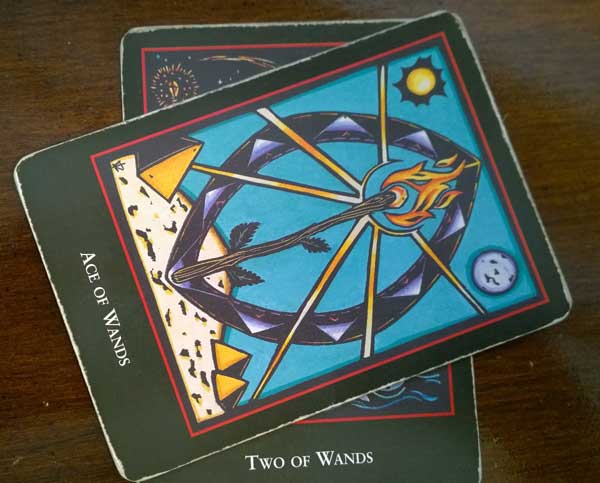
Welcome to my Community Blog for tarot enthusiasts.
Anyone with an interest in tarot, be they student, artist, collector, writer, teacher or reader, is welcome to
to include here.
Exploring The Crossing Card
Some thoughts, and Sway presentation, on interpreting the crossing card in the Celtic Cross tarot spread.
The Celtic Cross. In all its variations, is a very well-loved tarot spread. One of the reasons for its popularity, I think, is that it is comprehensive, addressing most areas of life.
My modified 11-card Celtic Cross is my favorite spread, and my go-to spread for virtually all professional readings I do. You can find this spread in both my books, Tarot Tour Guide and Fortune Stellar.
Recently, I did an in-depth exploration of my Celtic Cross for a class in Tarot Town. Tarot Town members can view it in archive.
Preparing for that class got me thinking that many of the positions in the Celtic Cross are interesting and insightful enough to do a presentation on a specific position.
For me, no card position is more interesting, nor more telling, than the crossing card.
First, its very name, with its archaic charm, is both descriptive and mysterious.
In certain magickal cultures, the term “cross” refers to a hex or a curse. This is certainly in line with the crossing position in the Celtic Cross, which represents a challenge, obstacle or problem.
While some positions of the Celtic Cross may vary in their interpretation from reader to reader, virtually all readers will agree that the crossing card is read as a problem, challenge, issue, block or obstacle.
The crossing card is actually dealt across the center card, and is always read upright, because its very position allows for a lot of wiggle-room as we ascertain the dignity of the card.
Many readers interpret the crossing card as a direct obstacle regarding the card it crosses. Other readers will see the crossing card as representing the biggest challenger of all, which will not necessarily be what concerns the client most, nor particularly connected to the card it physically crosses.
The card that is crossed by the crossing card is generally interpreted as the current atmosphere, where you are right now, the present, or the situation.
Although I tend to interpret the crossing card as the biggest over-arching problem faced by the client, I do see great value in looking at the crossing card and the specific card it crosses, and finding the story within those two cards.
Often in readings I find that these two cards do indeed tell a poignant story.
Within that story, the crossing card can take on a number of roles beyond illustrating the challenge.
Sometimes the crossing card can indicate not only the problem, but also the cause of the problem, or, perhaps, a solution to the problem.
Sometimes the crossing card simply states the problem, and begs another question and more cards to indicate a solution.
It is also possible to perform a simple-yet-insightful 2-card reading based on this aspect of the Celtic Cross.
Let the first card represent the atmosphere, and let the second card cross the first, indicating the biggest challenge. You could also let the first card indicate a goal, and the crossing card indicate what it will take to reach that goal.
As a healing art, a tarot reading must get to the heart of a problem, and offer solutions. The crossing card is often an efficient tool in helping us do that.
Look through the presentation below to see some examples of crossing cards that have appeared for me in readings, and what they represented.
As a tarot exercise, try playing with this two card spread, and find the stories you can see in just two cards.
For further study, and evidence that great minds think alike, check out The Tarot Lady, Theresa Reed’s take on what she brilliantly calls “The Mini Cross.”
Please be patient - we are working to fix the link to the Celtic Cross interactive display!

